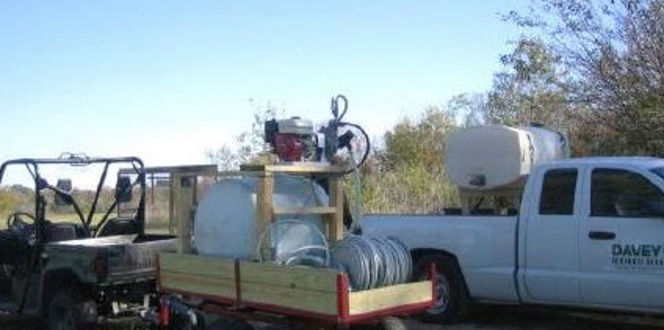Tappan Zee Bridge Replacement Project
Davey Resource Group performed wetland delineations and a number of environmental studies along a 30-mile highway corridor for the Tappan Zee Bridge replacement project. Environmental studies included upland terrestrial habitat mapping and various endangered and threatened species studies.
Project Narrative:
The NY State Thruway Authority and the Governor of New York created a Task Force to make recommendations about the future of I-287 and the Tappan Zee Bridge. The Task Force recommended the replacement of the Tappan Zee Bridge by a new bridge that will be wider, holding more lanes and providing for a rail crossing of the Hudson River. The primary study area is the 30-mile I-287 corridor between the I-287/I-87 interchange at Suffern, NY and the I-287/I-95 interchange in Port Chester, NY, including the Tappan Zee Bridge. Davey Resource Group (DRG) was part of the project team contracted to complete an Alternatives Analysis/Major Investment Study/Environmental Impact Statement (EIS) for the 2 project sponsors. The project is considered to be a Class 1 Action under USDOT regulations and will follow closely the Class 1 procedures under the NYSDOT Environmental Action Plan and the NYSDOT Design Procedure Manual and FHWA and FTA NEPA procedures.
Remaining Mindful Of Environmental Impacts
Numerous wetland complexes are shown on New York State Department of Environmental Conservation (NYSDEC), Regulatory Freshwater Wetlands Maps for Westchester and Rockland Counties (GIS CoverDRG), and U.S. Fish and Wildlife Service National Wetland Inventory (NWI) mapping for the project area. DRG performed wetland field investigations of the project study area to identify all freshwater and tidal wetlands, subtidal and inter-tidal shallows, beaches, shoals, mudflats, and wetland adjacent areas in the study area, etc. The field investigations verified the presence of the vast majority of these wetlands as well as additional wetland complexes not identified on these wetland maps. These wetlands were assessed to determine their approximate extent and habitat characteristics; base wetland maps and inventory report were prepared describing the wetland habitat characteristics.
DRG also prepared a report presenting the Level I and II coastal wetland screening criteria for use in evaluating the alternatives for the proposed Tappan Zee Bridge/I287 Corridor project. The Level I screening criteria include impact scenarios that may present fatal flaws for a proposed alternative such that it would eliminate that alternative from further consideration. The Level II screening criteria include other impact scenarios that are assigned number values that reflect the severity of the impact. By adding the impact values for a given alternative, a score is derived that can be utilized to compare the relative impacts of each of the alternatives.
DRG performed further terrestrial and aquatic ecosystem studies along the 30-mile project corridor to determine appropriate locations for rail stations, yards, and parking facilities for inclusion in the NEPA Environmental Impact Statement for the project.





